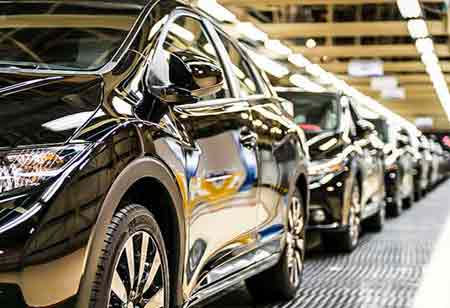THANK YOU FOR SUBSCRIBING
THANK YOU FOR SUBSCRIBING
Be first to read the latest tech news, Industry Leader's Insights, and CIO interviews of medium and large enterprises exclusively from Auto Tech Outlook

By
Auto Tech Outlook | Monday, July 10, 2023
Stay ahead of the industry with exclusive feature stories on the top companies, expert insights and the latest news delivered straight to your inbox. Subscribe today.
The automotive industry is witnessing an exciting era of innovation in engine and exhaust technologies.
FREMONT, CA: In the world of automotive technology, the engine and exhaust system serve as every vehicle's beating heart and lungs. With the constant pursuit of power, efficiency, and environmental sustainability, automotive engine and exhaust technologies advancements have revolutionized the driving experience. In this article, we delve into the innovative developments within the automotive industry that are shaping the future of engines and exhaust systems.
1. Engine Efficiency and Performance Enhancements: Automotive engines are undergoing a paradigm shift, focusing on improving efficiency and performance while minimizing environmental impact. Direct injection, turbocharging, and variable valve timing are among the key advancements that have resulted in higher power output and improved fuel economy. These technologies optimize the combustion process, enabling engines to extract more energy from every drop of fuel, resulting in enhanced acceleration and reduced emissions.
2. Electrification and Hybrid Powertrains: The rise of electrification and hybrid powertrains has brought a new era in automotive engineering. Hybrid vehicles integrate internal combustion engines with electric motors, improving fuel efficiency and reducing emissions. Furthermore, fully electric vehicles are gaining popularity, providing a clean and efficient alternative to traditional combustion engines. Integrating electric powertrains with advanced battery technology has revolutionized the automotive industry, paving the way for zero-emission vehicles with impressive acceleration and range capabilities.
3. Lightweight Materials and Design: Automotive manufacturers constantly explore lightweight materials and innovative design techniques to improve engine efficiency and overall vehicle performance. Using aluminium, carbon fibre, and other lightweight composites in engine construction helps reduce weight, resulting in enhanced fuel efficiency and agility. Additionally, advanced engine design approaches, such as downsizing and down speeding, optimize performance while minimizing emissions.
4. Exhaust Emission Control: Stringent emissions regulations have significantly improved exhaust emission control systems. Catalytic converters, particulate filters, and selective catalytic reduction (SCR) systems are key technologies to minimize harmful pollutants from vehicle exhausts. These systems utilize chemical reactions and filters to convert and trap pollutants, ensuring compliance with environmental regulations while preserving engine performance.
5. Active Exhaust Systems: To enhance the driving experience, automotive engineers have developed active exhaust systems that allow drivers to control the sound characteristics of their vehicles. Through electronically controlled valves or adjustable baffles, drivers can tailor the exhaust note to their preferences, from a subtle purr to a throaty roar. Active exhaust systems provide a thrilling auditory experience and promote a sense of connection between the driver and the vehicle.
Conclusion: The automotive industry is witnessing an exciting era of innovation in engine and exhaust technologies. Advancements in efficiency, electrification, lightweight materials, and exhaust emission control transform vehicles into powerful, eco-friendly machines. As automotive engineers strive to balance performance, efficiency, and sustainability, the future holds immense potential for groundbreaking advancements in automotive engine and exhaust systems. With each new development, drivers can expect enhanced performance, reduced environmental impact, and a more exhilarating driving experience.
 Copyright © 2025 AutoTech Outlook. All Rights Reserved | Privacy Policy | Subscribe | Sitemap | About us | Feedback Policy | Editorial Policy
Copyright © 2025 AutoTech Outlook. All Rights Reserved | Privacy Policy | Subscribe | Sitemap | About us | Feedback Policy | Editorial Policy 



